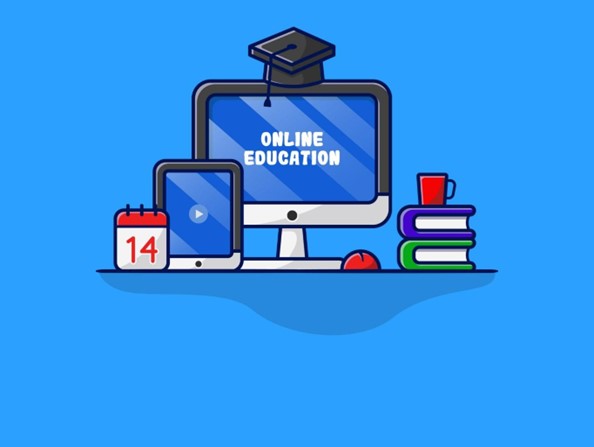Warum sollte ich mich digital bilden?
E-Learning hat die Bildung verändert, sowohl in Schulen als auch in der Arbeitswelt. Diese Art des Lernens spielt eine wichtige Rolle in der Zukunft der Bildung, und viele halten sie für die Zukunft der Bildung. Die Vorteile dieser Form der Bildung und damit einige der Gründe, warum wir uns in diesem Bereich widmen sollten, werden in den folgenden Abschnitten näher erläutert.
Einer der Hauptgründe für die Bedeutung der Online-Bildung liegt in der Entwicklung der Technologie und den Auswirkungen, die sie derzeit auf alle Bereiche hat. Die digitale Kompetenz ist heute einer der wichtigsten Bereiche, und “niemand sollte zurückgelassen werden”.
Was das E-Learning selbst betrifft, so haben mehrere Studien ergeben, dass sich die Lernenden online stärker engagieren und beim Online-Lernen tendenziell mehr Wissen erwerben als im regulären Unterricht. Dies mag daran liegen, dass Online- und Multimedia-Inhalte den Lernenden die Möglichkeit geben, sich in ihrer eigenen Zeit und in ihrem eigenen Tempo mit den gegebenen Materialien zu beschäftigen. Dies führt uns zu einem weiteren positiven Aspekt: Mit E-Learning entfallen viele Störungen, die mit der “verlorenen” Zeit zwischen dem Weg von zu Hause zum Unterricht und zurück nach Hause zusammenhängen, da wir von unserem eigenen Platz aus auf alle Inhalte zugreifen können. Dies trägt dazu bei, dass E-Learning zu einer weniger zeitaufwändigen Verpflichtung wird. Da Online-Kurse in der Regel eine kontinuierliche Bewertung vorsehen, können sich die Studierenden besser konzentrieren und sind weniger abgelenkt, während sie sich neues Wissen aneignen (Christians, 2022).
Aus der Sicht der Teilnehmenden können wir auch sagen, dass Digitale Bildung die Effizienz der Mitarbeiter, die damit arbeiten, steigern kann. Das liegt daran, dass sich ihre beruflichen Entwicklungsmöglichkeiten verbessern, und die Möglichkeit, von einem komfortableren Ort aus zu arbeiten, trägt sozusagen zur Steigerung ihrer Zufriedenheit bei. Daraus lässt sich schließen, dass E-Learning sowohl den Schülern als auch den Lehrern helfen wird (Josep, 2022).
Und schließlich können wir mit Blick auf den Umweltaspekt dieser Gleichung sagen, dass E-Learning eine umweltfreundlichere Option ist, da es, wenn es von zu Hause aus durchgeführt wird, massiv zur Verringerung der CO2-Emissionen und des Energieverbrauchs beiträgt, weil man weniger pendelt (Christians, 2022).
Jeder Mensch hat bekanntlich unterschiedliche Lernvorlieben. Dies kann auf den Charakter, die Erziehung oder einfach auf den persönlichen Geschmack zurückzuführen sein. Manche Menschen bevorzugen soziale und interaktive Lehrmethoden, andere ziehen es vor, durch den Stoff geführt zu werden, und wieder andere ziehen es vor, mit ihren Lehrern zusammenzuarbeiten. E-Learning kann sich an die persönlichen Erfahrungen jedes Einzelnen anpassen und so dazu beitragen, das Potenzial und den Wissenszuwachs aller zu maximieren (Christians, 2022).
Die Skepsis gegenüber E-Learning ist nach wie vor groß, und es fällt manchmal schwer, die Notwendigkeit zu verstehen, konventionelle Bildungsformen aufzugeben. Die Zahl derer, die E-Learning als eine der besten Optionen ansehen, nimmt jedoch zu.
Unter Berücksichtigung der Besonderheiten jedes Einzelnen hat das E-Learning also viele Vorteile. Die Autonomie und Flexibilität, die E-Learning bietet, ist zweifelsohne ein wichtiger Faktor. Jeder Einzelne kann in seinem eigenen Tempo lernen, um seine Fähigkeiten zu verbessern.

